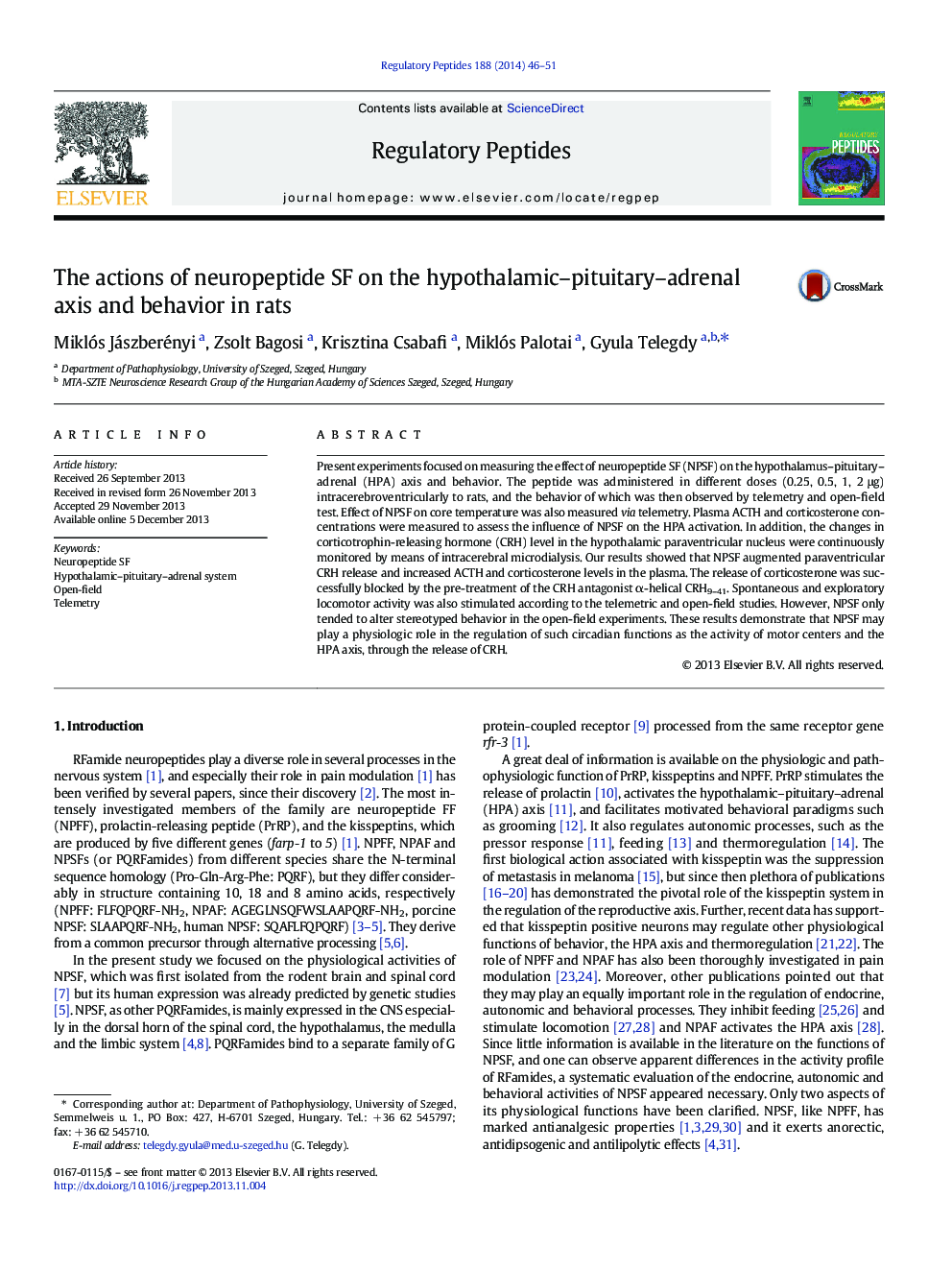| Article ID | Journal | Published Year | Pages | File Type |
|---|---|---|---|---|
| 2022415 | Regulatory Peptides | 2014 | 6 Pages |
•Neuropeptide SF was administered intracerebroventriculary to rats.•Neuropeptide SF increased paraventricular CRH and plasma ACTH and corticosterone.•α-Helical CRH9–41 reversed the neuropeptide SF-induced corticosterone release.•Neuropeptide SF stimulated spontaneous and exploratory locomotor activity.
Present experiments focused on measuring the effect of neuropeptide SF (NPSF) on the hypothalamus–pituitary–adrenal (HPA) axis and behavior. The peptide was administered in different doses (0.25, 0.5, 1, 2 μg) intracerebroventricularly to rats, and the behavior of which was then observed by telemetry and open-field test. Effect of NPSF on core temperature was also measured via telemetry. Plasma ACTH and corticosterone concentrations were measured to assess the influence of NPSF on the HPA activation. In addition, the changes in corticotrophin-releasing hormone (CRH) level in the hypothalamic paraventricular nucleus were continuously monitored by means of intracerebral microdialysis. Our results showed that NPSF augmented paraventricular CRH release and increased ACTH and corticosterone levels in the plasma. The release of corticosterone was successfully blocked by the pre-treatment of the CRH antagonist α-helical CRH9–41. Spontaneous and exploratory locomotor activity was also stimulated according to the telemetric and open-field studies. However, NPSF only tended to alter stereotyped behavior in the open-field experiments. These results demonstrate that NPSF may play a physiologic role in the regulation of such circadian functions as the activity of motor centers and the HPA axis, through the release of CRH.
